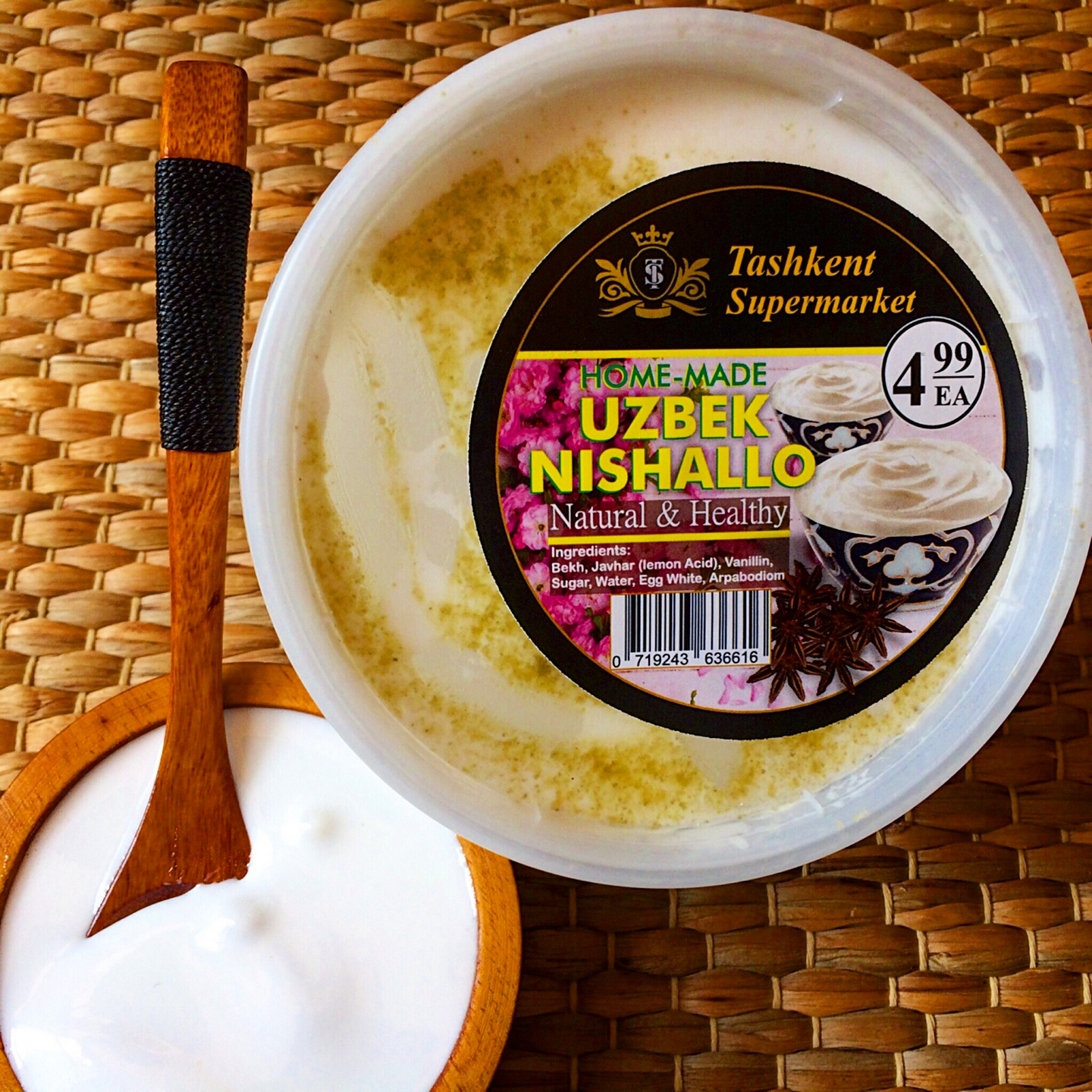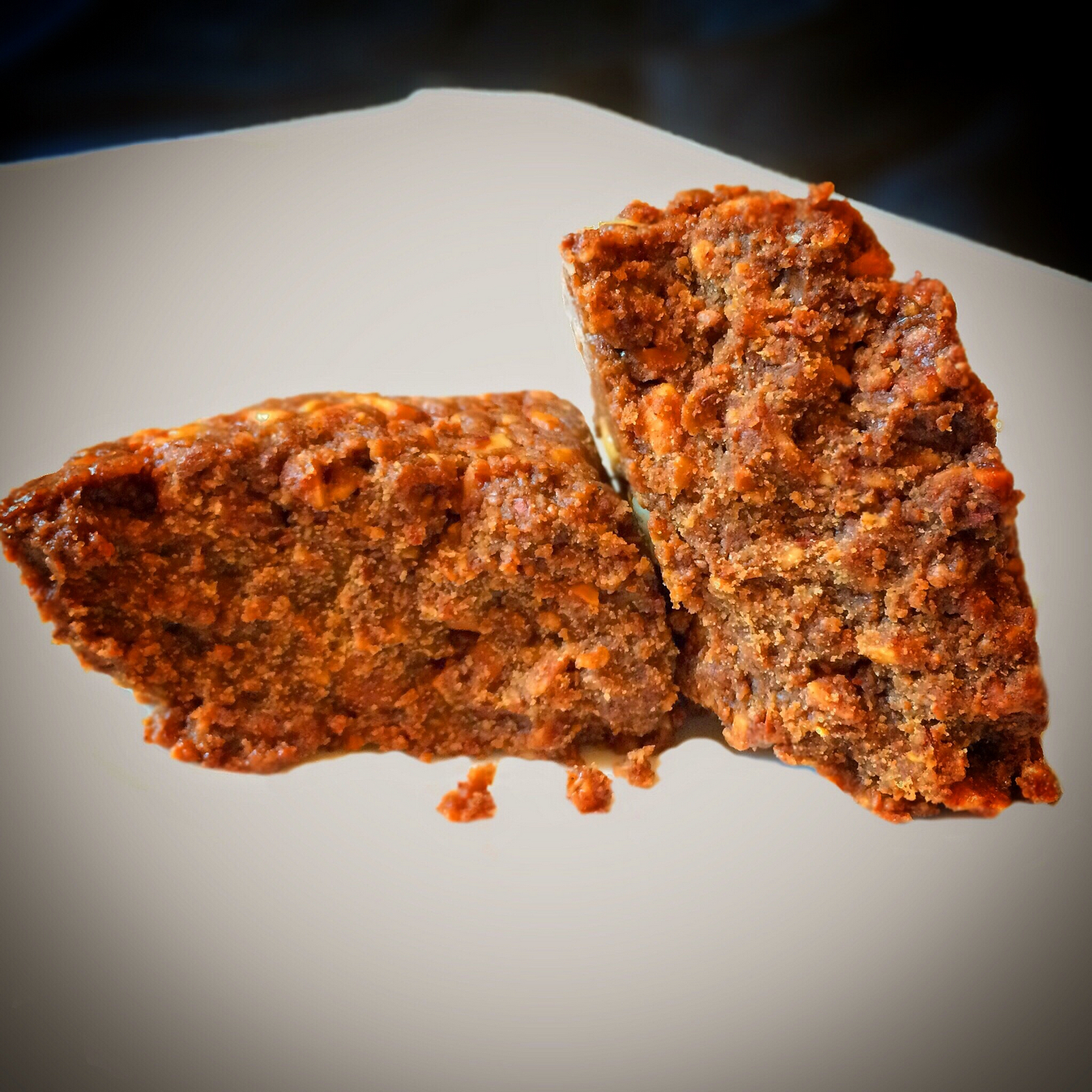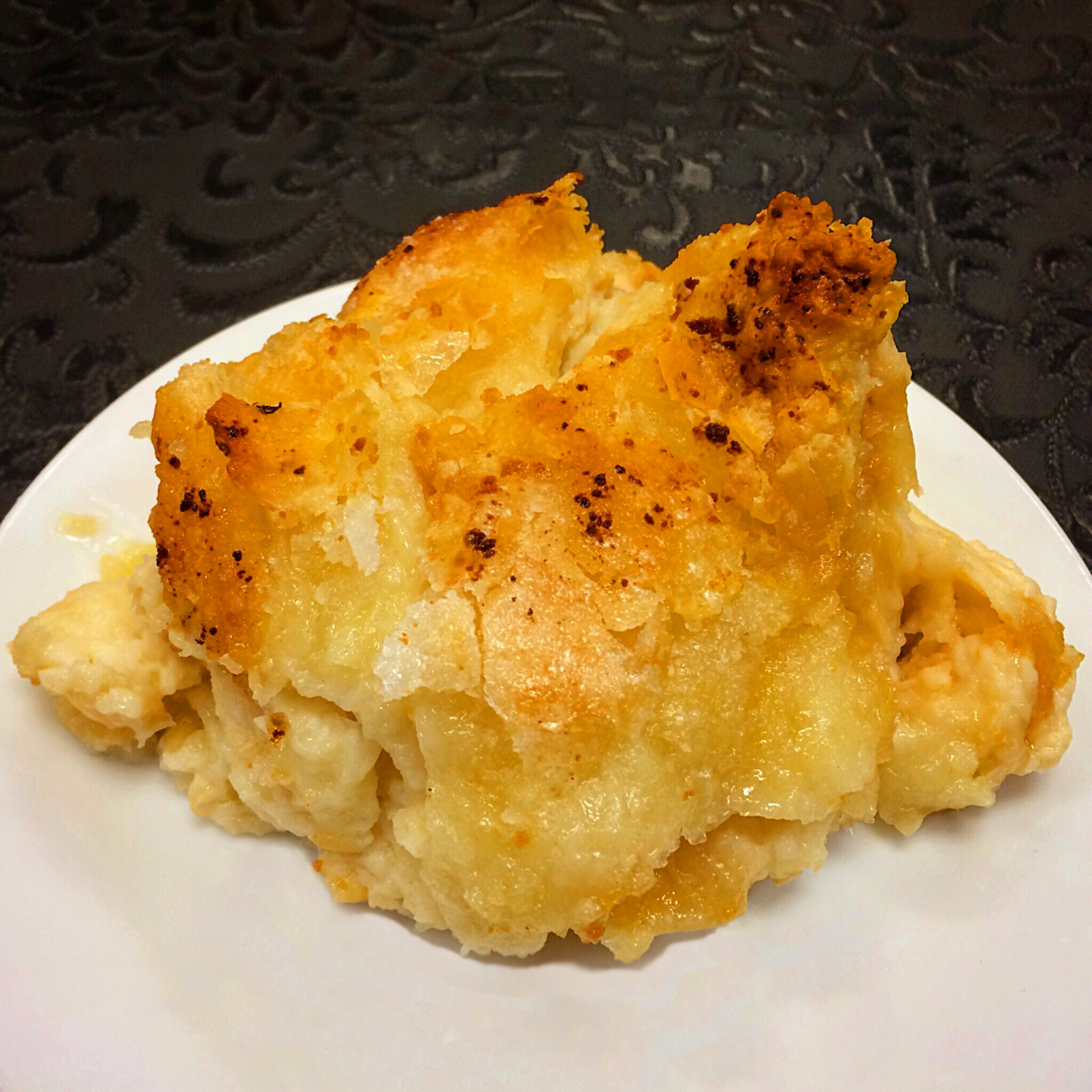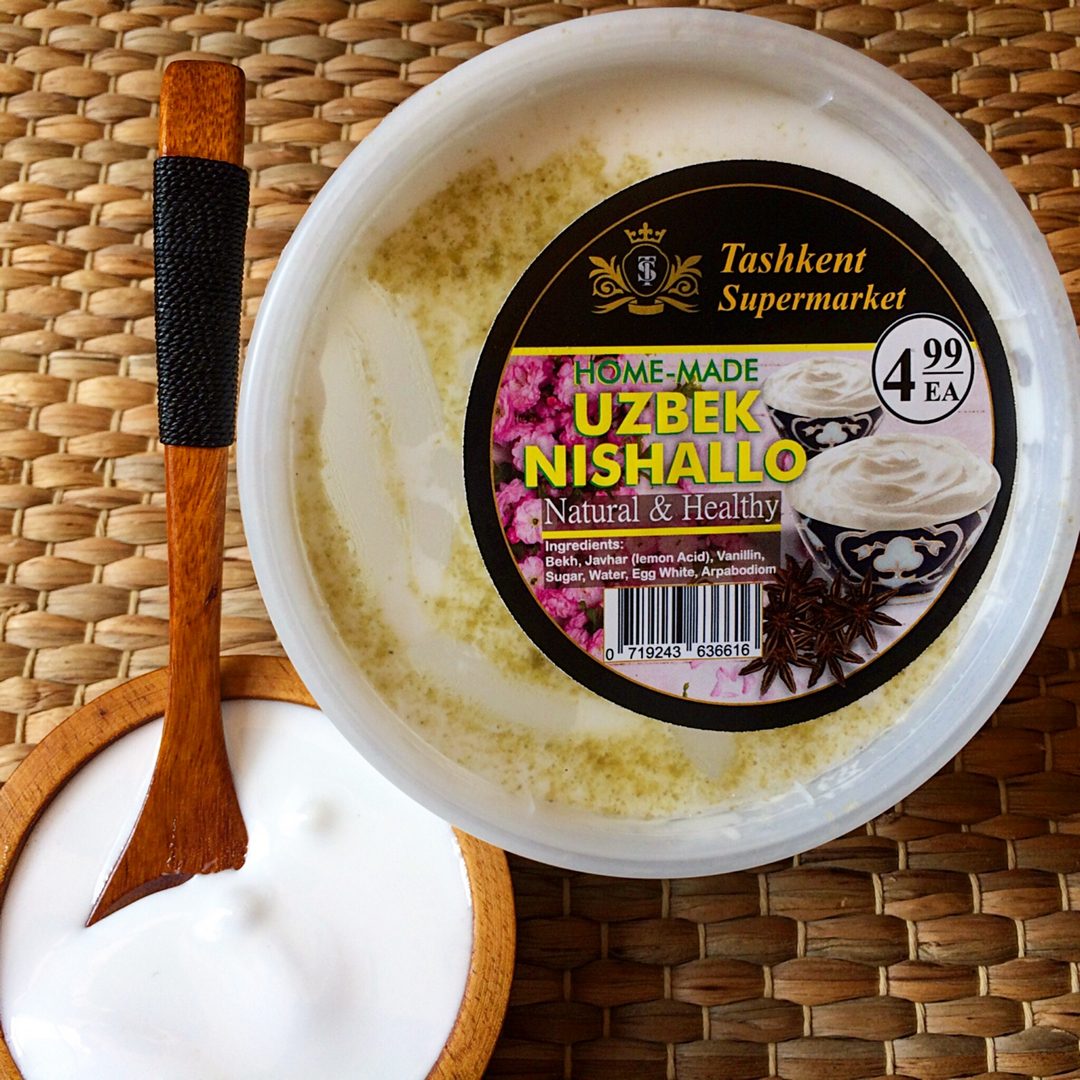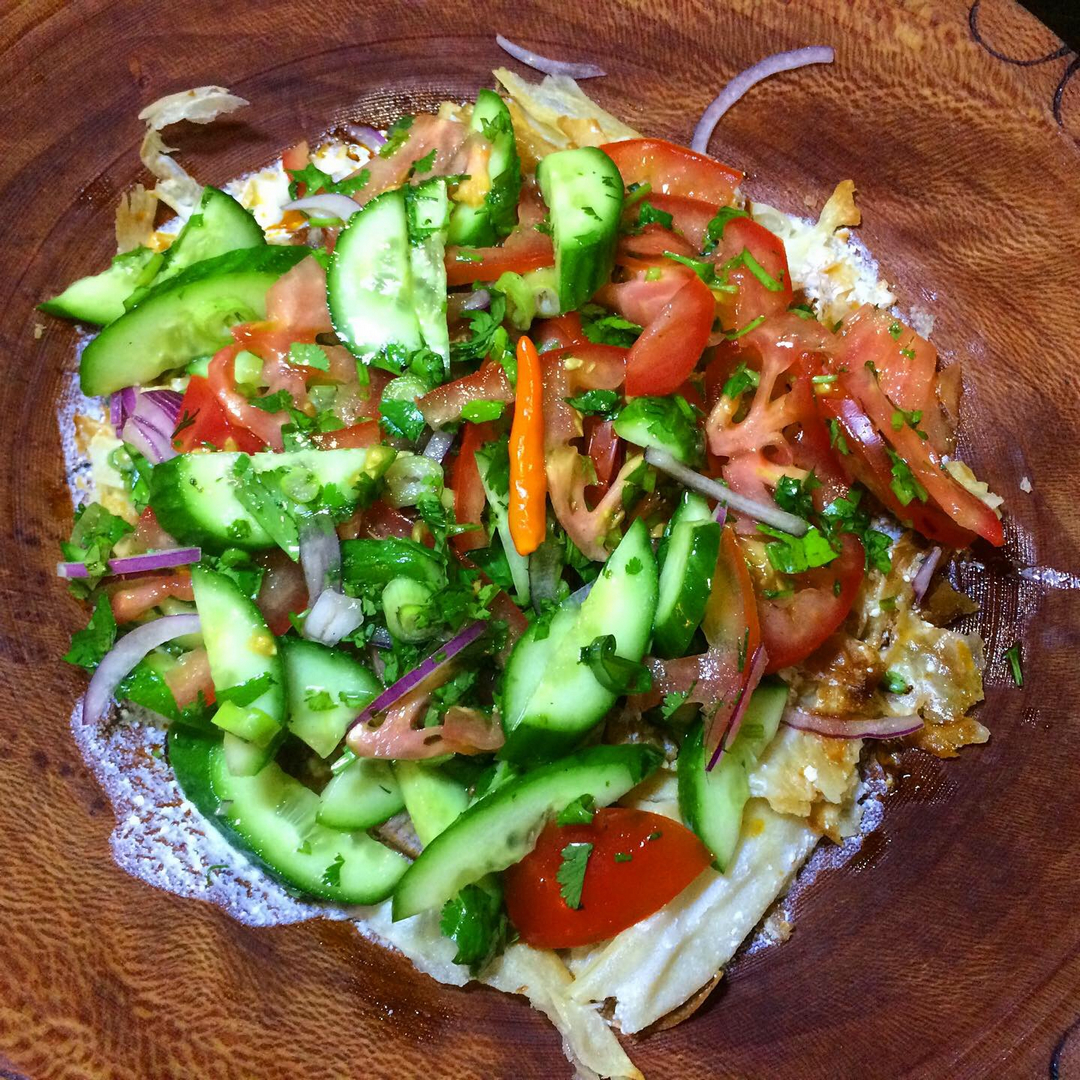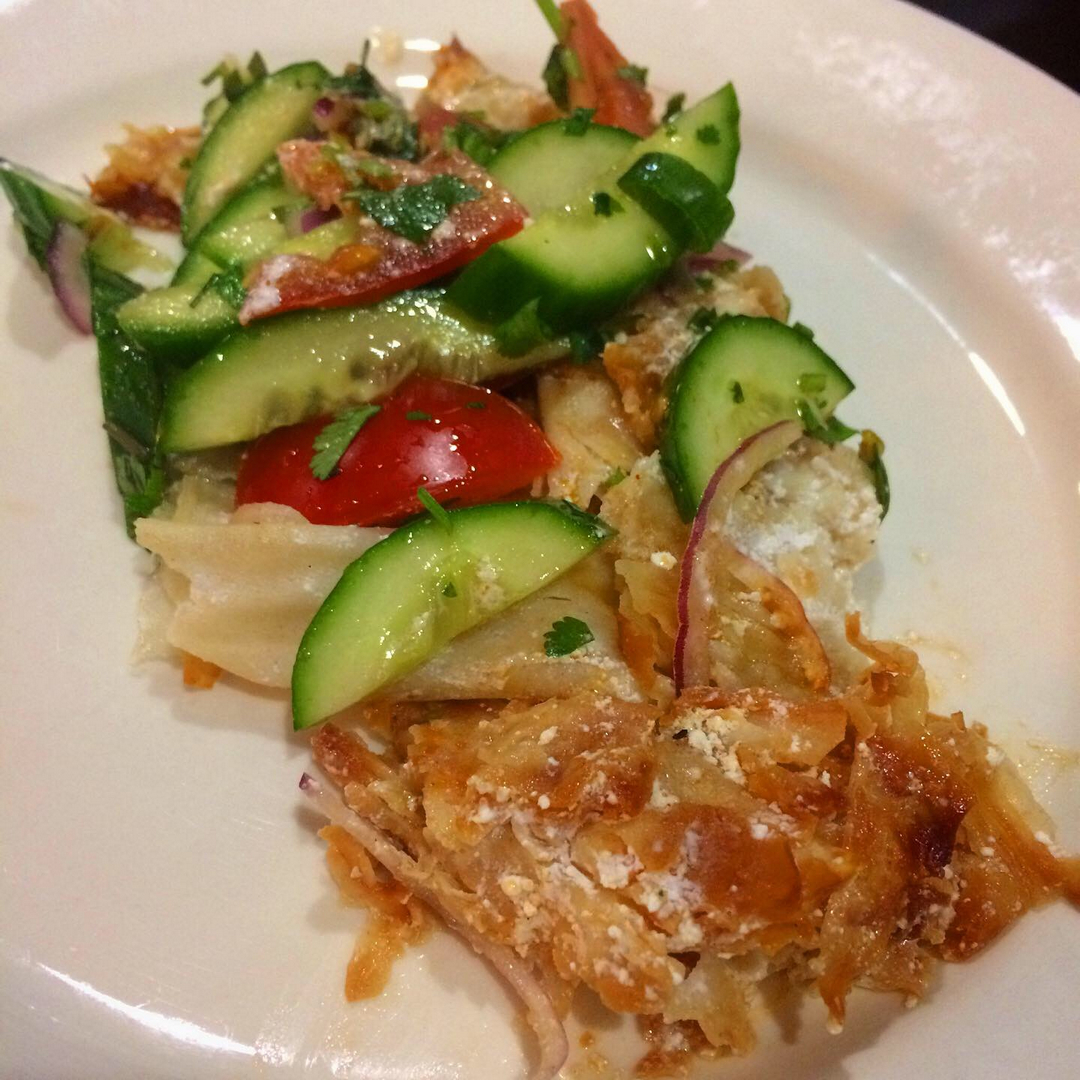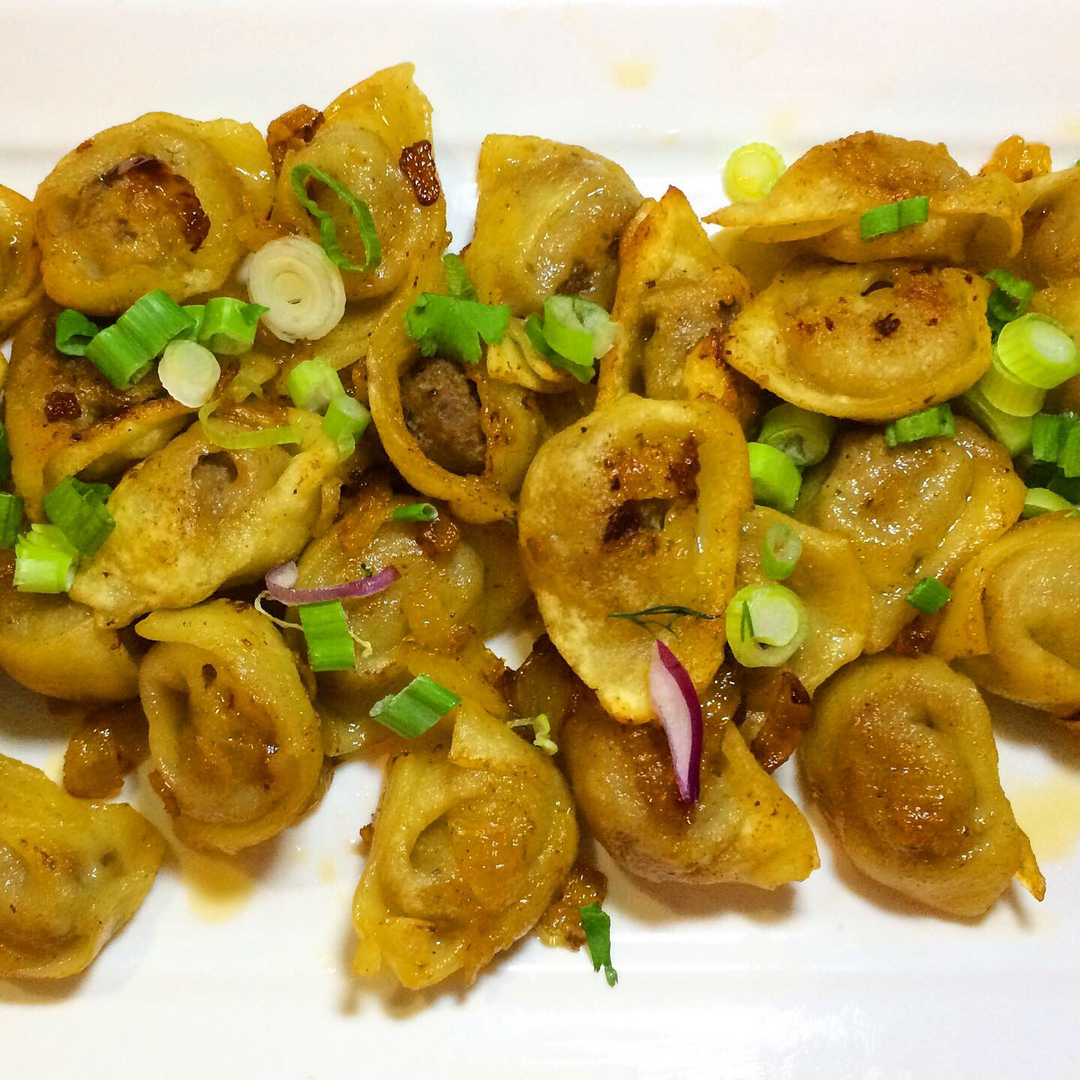When I write about restaurants on Instagram, they’re usually brief takes accompanied by a photo or two. (You can see my feed right here on ethnojunkie.com, updated almost daily, by selecting the “Instagram” category from my home page – no signup required.) But because of Instagram’s character count limitations, it’s often necessary to break up a review into several parts. This one originally appeared as three posts from 2018 and three more from 2019.
Named for the capital of Tajikistan, Café Dushanbe (formerly Café Rokhat) brings its yogurty cuisine to Brooklyn and does so admirably. The Kurutob alone was worth the trip to Sheepshead Bay, Brooklyn but there’s lots more to recommend Café Dushanbe.
Here, in no special order, are a few of the extraordinary dishes we sampled.
(Click any photo to view it in high resolution.)
 Kurutob
Kurutob
One of the most impressive dishes we experienced (so much so that one of our group requested an additional order of it to go) was Kurutob (you might see qurutob), the pride of Tajikistan’s gastronomy. It starts with a base of fatir, flaky, layered flatbread which is then invigorated with qatiq, a delicious homemade yogurt, along with sautéed onion, red onion, tomato, cucumber, herbs, and spicy green pepper for an essential kick. Mix well for maximum enjoyment. Tajikistan’s answer to Italy’s panzanella, perhaps?
 Qatiq, Fatir, and Kulcha
Qatiq, Fatir, and Kulcha
Straight-ahead qatiq along with two breads – the fatir and puffy kulcha – plus a ramekin of flavorful herb butter. If your only encounter with yogurt has been in the dairy aisle of your local supermart, you need to try this posthaste.
 Non-toki
Non-toki
A concave behemoth with a nod to matzoh.
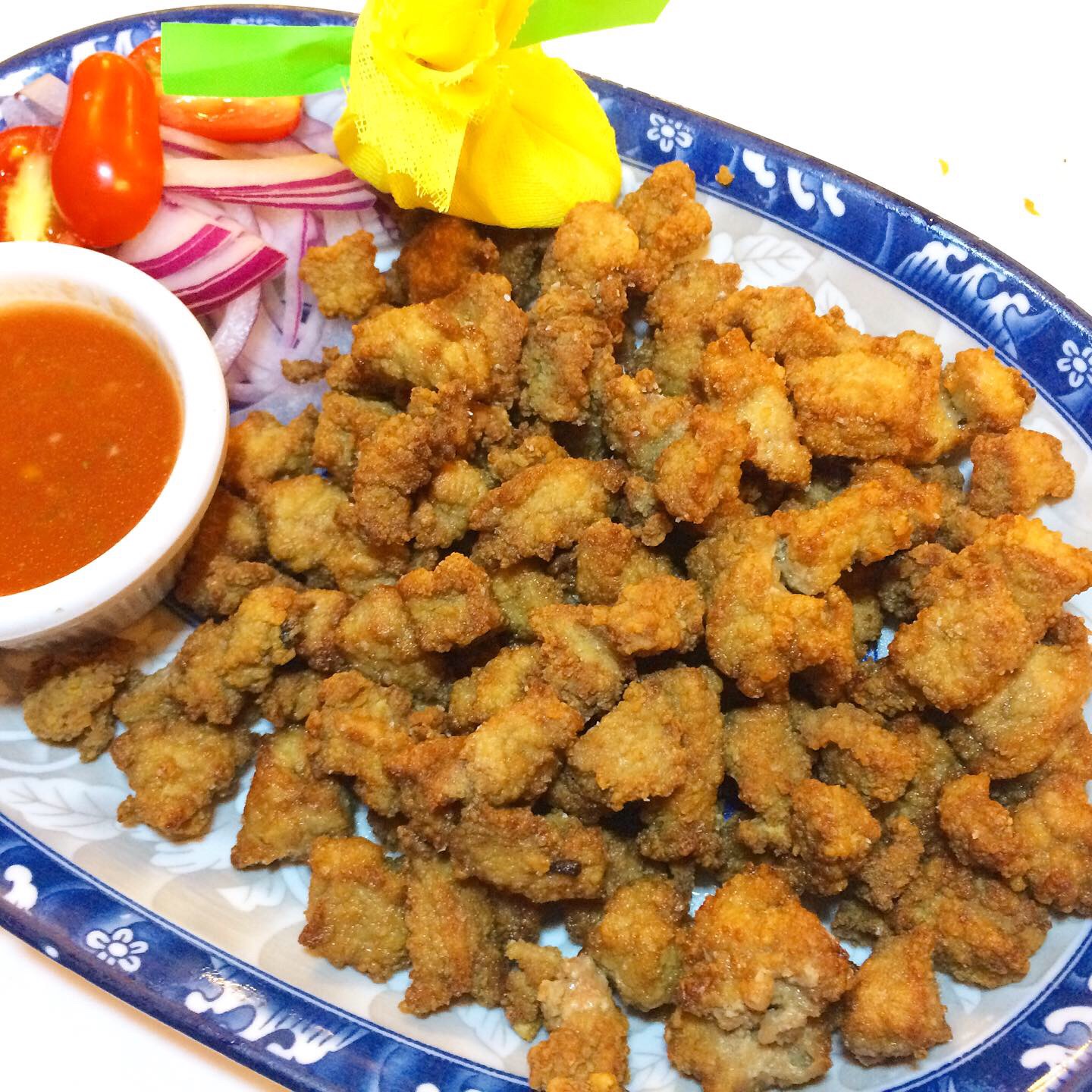 Pan Fried Calf’s Liver
Pan Fried Calf’s Liver
GBD (Golden Brown and Delicious). Are you a liver lover or a liver leaver? In the aftermath, not a morsel remained – and I had been hoping for leftovers. Ah well.
Everybody loves dumplings and every cuisine has its own traditional renditions. I’m no exception to that sweeping statement and IMHO, Café Dushanbe has it knocked in this department. Manti are fist-sized steamed dumplings stuffed with chopped lamb, onions and herbs and are widespread throughout Central Asian and South Caucasian countries. This version is filled with relatively large, succulent hunks of seasoned lamb and are truly among the best I’ve ever tasted. We ordered two styles, fried…
 Fried Manti
Fried Manti
…and steamed. Both came with Tajik yogurt and were superb.
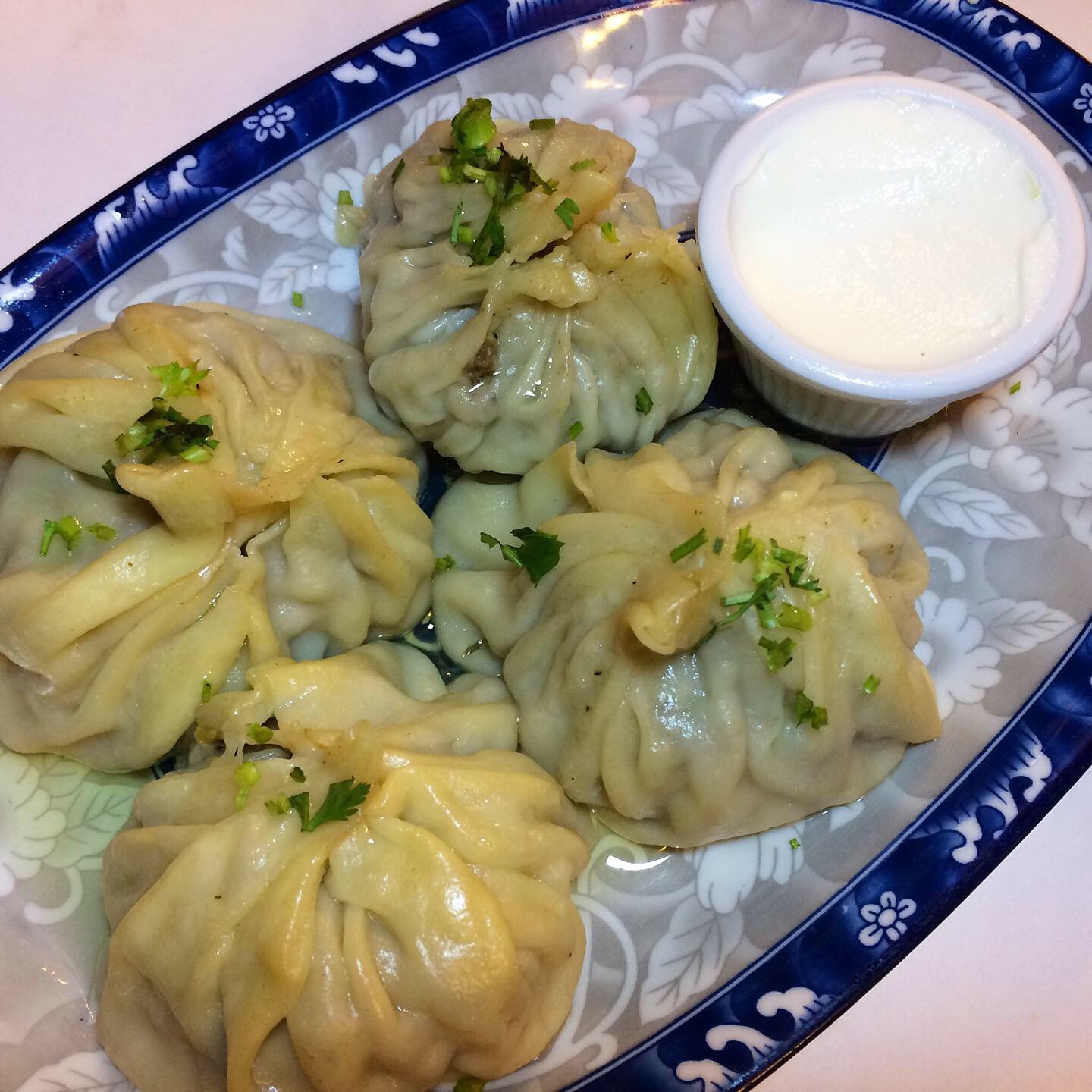 Steamed Manti
Steamed Manti
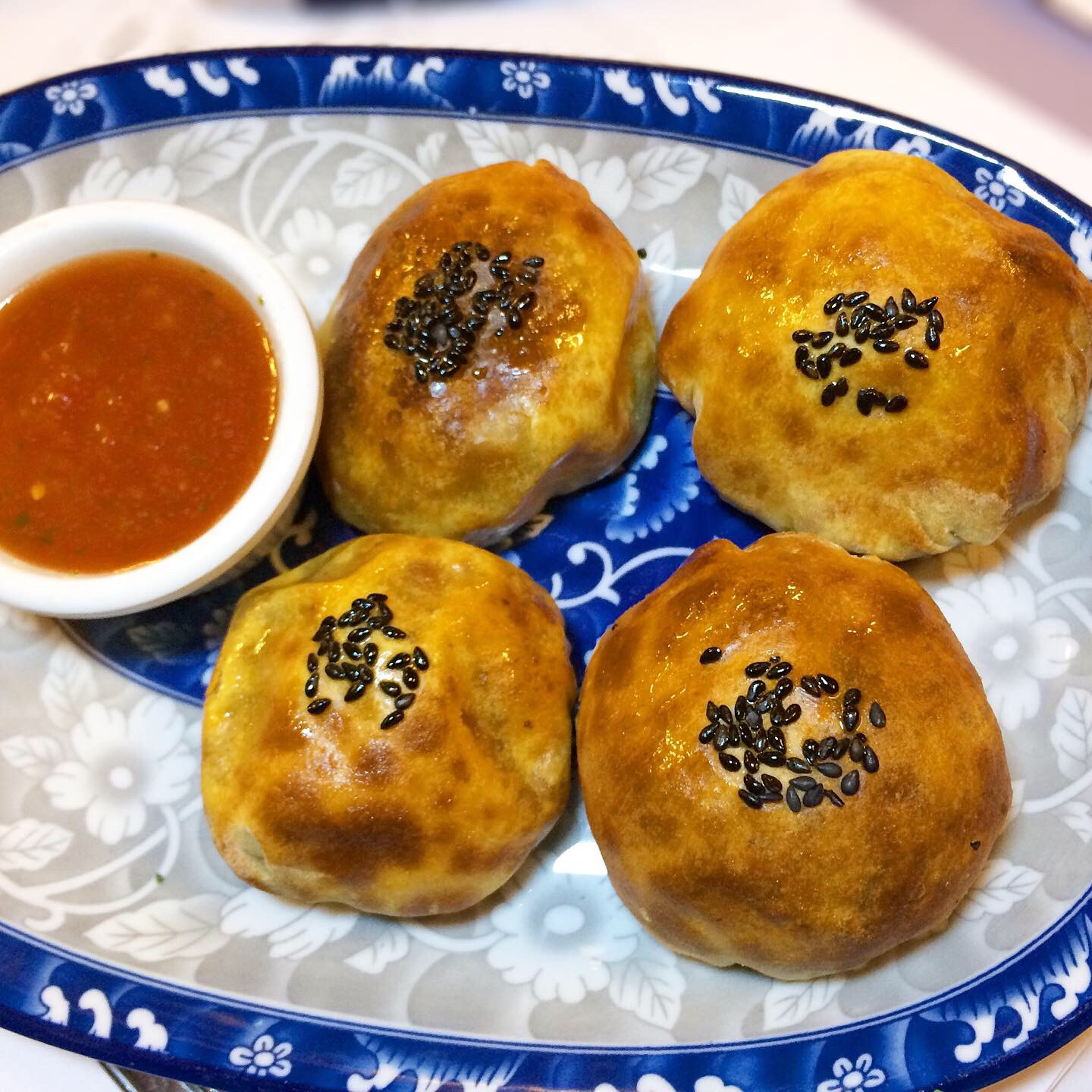 Samsa Gizhda
Samsa Gizhda
And just to round out the trio, we ordered Samsa Gizhda – baked (for contrast, right?) meat pies, a savory blend of lamb and beef encased in a light dough and served with a tomato based sauce.
 Morkovcha Salad
Morkovcha Salad
Abbreviated history lesson: In the 1920s-30s, the Japanese occupied Korea; some Koreans managed to escape to Russia, but Stalin subsequently moved them to Central Asia, mostly Uzbekistan and Kazakhstan. These people, the Koryo-saram, unable to obtain the cabbage they needed to prepare kimchi, created a version made from carrots, red pepper, garlic, and ground coriander seeds. Abbreviated gastronomic review: yum.
 Shashlik
Shashlik
Three remarkable selections from the Barbecue section of the menu. In front, the biggest, juiciest, most perfectly seasoned lamb ribs I’ve ever tasted. Behind those, Beef Roulade “Dushanbe”; I usually eschew beef in favor of meats with a little more personality. Dushanbe’s beef roulades are rolled around fat for flavor and accentuated with indescribably delicious seasoning; they were so good, they made me believe in beef again. Lurking beneath, skewers of tender, flavorful lamb.
 Homestyle Potatoes
Homestyle Potatoes
Where would meat be without potatoes? This skillet of potatoes topped with saucy shiitake, oyster, and button mushrooms in the company of fried onions and herbs was the perfect partner.
 Syuzma
Syuzma
A bracing salad of radishes, cucumbers, and greens was dressed with yogurt by a different designation, “syuzma”, sour milk that had been strained through a canvas bag; for comparison, see qatiq above. Indeed, Syuzma was the name (and the whole point) of the dish. So many yogurts, so little time.
 Okroshka
Okroshka
Okroshka is a cold summer soup of Russian heritage, yogurt-based of course, made from boiled potatoes, raw vegetables, eggs, dill and other herbs. I neglected to inquire about specific ingredients, but I can assure you it was delicious; I guess I’ll just have to go back and ask.
As if I need an excuse. 😉
Café Dushanbe is located at 1788 Sheepshead Bay Road, Sheepshead Bay, Brooklyn.
